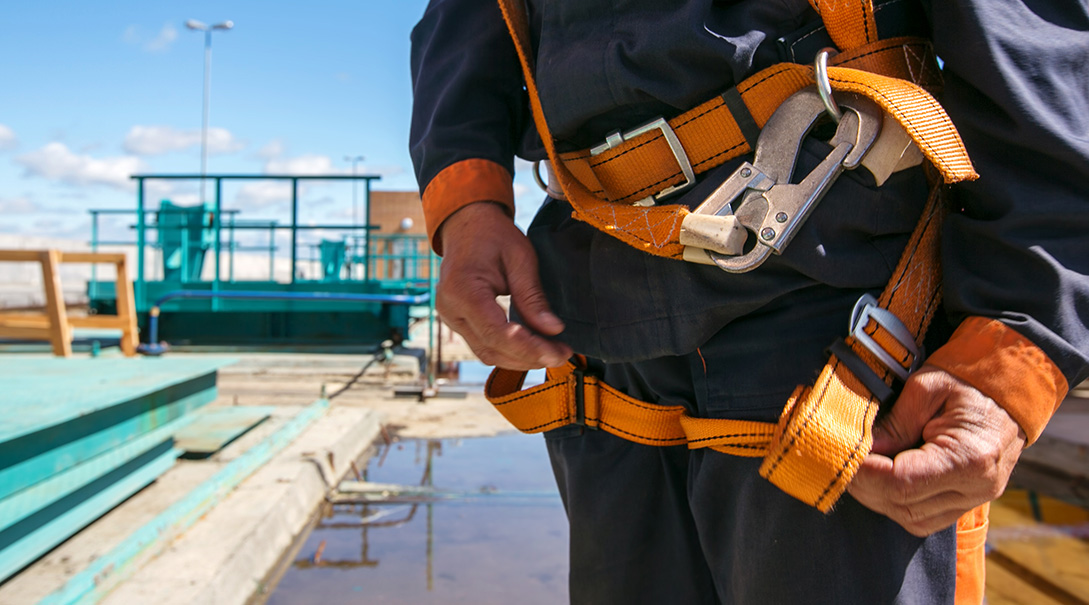Construction jobs are some of the most important and dangerous positions in the entire workforce. However, teams can do a lot to minimize the risk of injury by implementing a strong construction site safety plan.
That’s why we’ve put together this article. It features 7 construction safety tips that every contractor should implement.
Table of Contents
7 Construction Safety Tips You Need to Know
Construction site safety is easier when you have a good plan. So here are 7 construction safety tips for 2024 to help you create your own.
1. Always wear personal protective equipment (PPE).
PPE is essential on construction sites. Everyone on your team must wear a helmet, glasses, and gloves whenever necessary.
But you also want to make sure that your team members are wearing the correct clothing to work, which can include steel-toed boots and long pants to protect the lower body from unnecessary injury.
If you make sure that everyone you employ wears the right PPE, you can do a ton to reduce your risk of on-site injuries.
However, this may be difficult, as 75% of violations occur because people “just don’t want to wear it.”
2. Limit crowd sizes in work areas.

That’s why it’s a good idea to limit the number of people who can be together in a work area. For example, if a piece of heavy machinery is in use, you may tell everyone who’s not directly involved in that task to leave the area until it’s complete.
The machines and tools that construction workers use are powerful and potentially dangerous – especially to someone focusing on something else. So the best way to reduce the risk to a bystander is ensuring that bystanders aren’t in the area.
3. Keep work areas clear.
You also want to ensure that you’re keeping your work areas as clean and clear as possible. Injuries like trips, falls, lacerations, and slices can occur if your team leaves its gear lying about haphazardly.
Practicing good housekeeping can go a long way toward preventing these types of injuries. So, it’s essential to emphasize this while getting your team to pay more attention to safety.
4. Use best practices for scaffolding work.
Working on scaffolding is common on large construction projects. But doing so can also be quite dangerous if your team isn’t following the proper practices.
With that in mind, you should try to make sure that when scaffolding is involved at your job sites, your employees always use the following OSHA best practices while working with it:
- Never support scaffolds on uneven surfaces
- Keep scaffolding at least 10 feet from all power lines
- Don’t leave materials or debris abandoned on scaffolding at the end of the day
- Never use scaffolding in bad weather – especially in icy or snowy conditions
- Never overload a scaffold
5. Keep a communication device on hand.
If someone on one of your job sites does experience an injury, you want to make sure that they get it treated as quickly as possible. However, some job sites are large, and people may get injured in reasonably isolated locations.
That’s why it’s also a good construction safety tip to ensure that your employees always have some type of communication device or personal safety devices with them, such as a radio or cellphone. Whatever the device, your employees need to have a way to contact someone if they fall and can’t get up.
6. Make sure to label and properly store all chemicals.
Some job sites have chemicals on hand. If yours does, you need to make sure that your team labels these clearly and stores them safely.
Certain types of construction-industry chemicals can be very hazardous when mishandled. But that’s what’s likely to occur when you leave chemicals out on a job site without proper labeling or storage.
The best way to prevent chemical injuries from occurring is to solve the problem before it happens. When you clearly label every chemical on your site, you significantly decrease the chances of someone mistaking that chemical for something else.
7. Create a culture of safety
If you’re a contractor, you can only do so much on your own to promote workplace safety on your sites. You can create clear expectations and hold your teams accountable to them. But you can’t be everywhere all of the time.
That’s why another big part of job site safety is getting buy-in from your team. If you can get them to understand the need for safety and help you implement safe practices, it will be much easier for you to reduce your risk of workplace injury.
A good way to do this is by focusing on getting your team leaders. They can act as your eyes and ears on the job site so that more potential safety issues get called out and resolved than you would be able to do on your own.
It’s also important to put your team through construction site safety training if you haven’t already. Receiving dedicated safety training can do wonders for educating your employees on the many risks of construction work and how to deal with them in the safest manner possible.
Construction Site Safety Training
Ultimately, if you want your job sites to be as safe as possible, your team will need some training. That’s especially true if they work with special materials or machinery, such as scaffolding.
At AOTC, we offer on-site safety training for construction teams. We have extensive experience promoting safety at some of the top companies in the South.
We can do the same for your construction business to make sure that it meets all of its safety and compliance goals – regardless of whatever those goals might be.
Get in touch with us today to learn more about how we can help you achieve your construction site safety goals.
